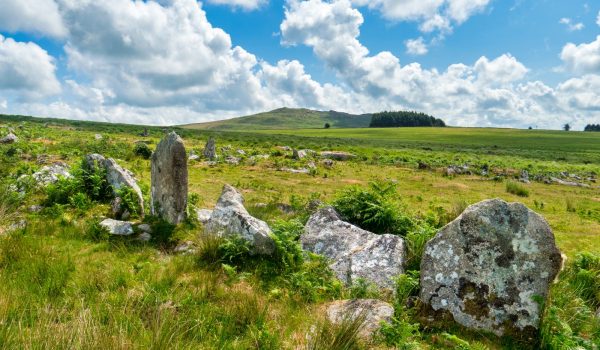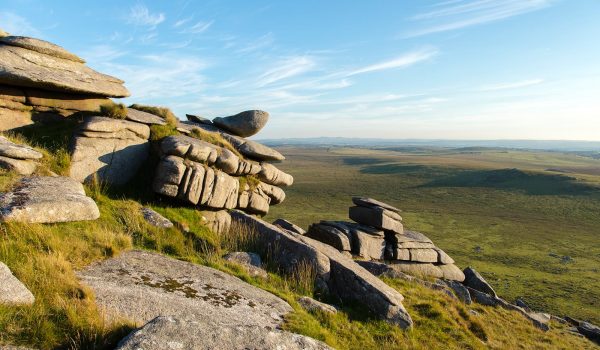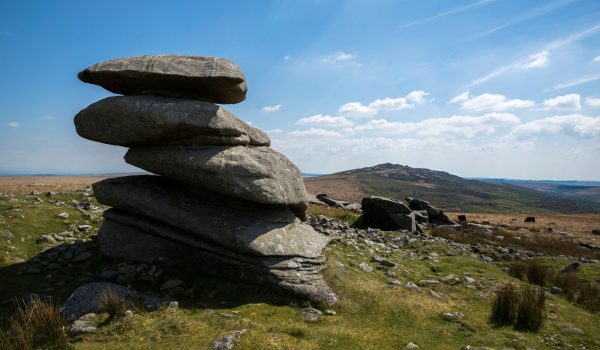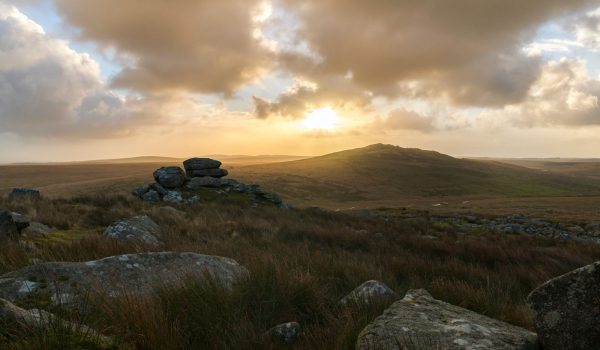The Highest Point in Cornwall
Brown Willy

Bronze Age settlement with Brown Willy Tor in the background

Bodmin Moor
Brown Willy, the highest point in Cornwall, is a prominent hill on Bodmin Moor, which is an area of outstanding natural beauty. The name comes possibly from the Cornish, Bronn Wennili, meaning “hill of swallows” or from Bronn Ewhella, meaning “highest hill.”
The name has evolved through a variety of historical spellings: Brunwenely c1200, 1239; Brown Wenely 1239; Brenwenelyn 1276; Bronwenely, Brunwely 1280; Brounwenely 1350, 1362; Broun Welyn 1386; Brounwenyly 1401; Brownwenelegh 1450, 1470; Brounwellye, Bronwelly 1576; Brown-wellye 1584; Brounwellie 1639; Menar Brownuello 1754.
At 420 meters (1,378 feet), it rises above the surrounding moorland, offering stunning panoramic views on a clear day.
It’s about 2½ miles (4 kilometres) northwest of Bolventor and 4 miles (6 kilometres) southeast of Camelford. The hill’s appearance changes depending on where you’re viewing it from. From the north, it looks like a conical sugarloaf, but up close, it stretches out into a long crest with multiple peaks.
From the summit, you can often see for miles, making it a fantastic spot for hikers and photographers alike.
Brown Willy is part of the rugged landscape of Bodmin Moor, which is characterised by its granite tors, rolling hills, and unique ecology. The moor is steeped in history and folklore, featuring stone circles, ancient barrows, and even tales of ghostly sightings.

Roughtor with Brown Willy in the far distance
The walk to Brown Willy typically starts from the nearby hill of Rough Tor, the second-highest peak in Cornwall. Many hikers combine the two for a scenic and rewarding trek. The path is challenging in places but manageable for most with sturdy footwear. Along the way, you might encounter wild ponies, sheep, and the occasional buzzard soaring overhead.
The area around Brown Willy is not just a natural wonder but also a haven for wildlife. Its diverse habitats support rare plants and animals, making it an important conservation area. If you’re planning a visit, be prepared for changeable weather—it can be quite windy and wet, even in summer.
For anyone visiting Cornwall, a hike to Brown Willy is a must-do experience, offering not only a chance to conquer the county’s highest point but also to immerse yourself in its wild beauty and rich heritage.

Brown Willy after a rain storm has passed
The Brown Willy Effect
This is a meteorological phenomenon associated with intense rainfall, particularly in Cornwall. It occurs when moist air is forced to rise over elevated terrain, such as Brown Willy, the highest point on Bodmin Moor. As the air ascends, it cools, causing water vapour to condense into rain.
The effect is known for creating localised, heavy downpours that can persist and even intensify as the air descends and interacts with surrounding landscapes. This can lead to flash flooding in affected areas. The term has become well-known among weather enthusiasts and is often cited when discussing extreme rainfall patterns in the region.

